Every once in a while, we have a really good interview that ends up on the back burner due to the industry’s crazy schedule, especially come awards season, but today, finally, we have a very special interview with someone who has been heavily involved with the complex post-production process at Marvel Studios and can shine a light on how things work over there — though it was conducted several months before Victoria Alonso‘s tumultuous recent exit.
Anedra Edwards is a VFX Editor at Marvel, who recently worked on Ryan Coogler’s Black Panther: Wakanda Forever. She’s also a far-too-rare woman of color working in visual effects — Kaitlyn Yang, who Below the Line spoke to last year, is another. As a member of the Motion Picture Editors Guild (MPEG), Edwards might be considered more on the editorial side of things, even if she’s very much part of the visual effects pipeline.
Edwards’ 14 years of experience in the industry has included work for Netflix, HBO, BET, Discovery Channel, NatGeo, NBC, and many other major companies, in addition to her role as VFX Editor on three seasons of the CW’s popular series Black Lightning. As part of her new role at Marvel, Edwards also worked on WandaVision alongside that series’ VFX Supe Tara DeMarco.
Below the Line spoke with Ms. Edwards in December for the following interview, in which we really explored the extremely important role she plays in making sure that Marvel’s post-production teams are fully in sync.
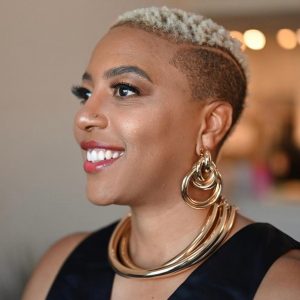
Below the Line: I speak with many VFX supes and a few editors, and we frequently talk about the ever-busy pipeline, since that’s not always something that’s very clear to others, but it’s my understanding that you serve as the essential link between the visual effects and editorial teams. Before we start, I’d love to know more about your background prior to getting into VFX. I read over your bio, and you seem to have had a lot of other interests before you got into post, is that right?
Anedra Edwards: I have a well-rounded background. [laughs] I got into visual effects editorial, actually, when I moved to L.A. I’m originally from DC, and I’ve been in L.A. [for] about six years, so visual effects editorial became an opportunity through the show Black Lightning, which is [produced by] the CW Network and Warner Bros. Studios. That was really my entry into visual effects editorial, and prior to working there, I also have experience in the cutting room as an assistant editor on picture editorial. Knowing how to maneuver around a cutting room was very fluid, in terms of picture editorial, before I came into visual effects.
Prior to that, I had a lot of background in reality TV and news, which is [a] great training ground, in terms of working in very fast-paced editorial environments. That’s where I gained a lot of those skills. Also, some of my 2D and motion graphics skills came from reality TV and news since that’s what we had to do a lot of the time. Having been influenced by that, coming into a visual effects background, [and] being able to do the compositing that’s needed, it really [helped me] excel [in] an episodic environment, and then VFX editorial at the feature level.
BTL: I recently spoke with Chris White at Weta; I’m not sure if you worked with him directly on Wakanda Forever...
Edwards: Technically, we worked together. I’m not employed by Weta, but essentially, because it’s the same project, we’re sending things back and forth to each other. We’re sitting in the same meetings, getting the same feedback. That’s awesome you talked to Chris. He’s amazing.
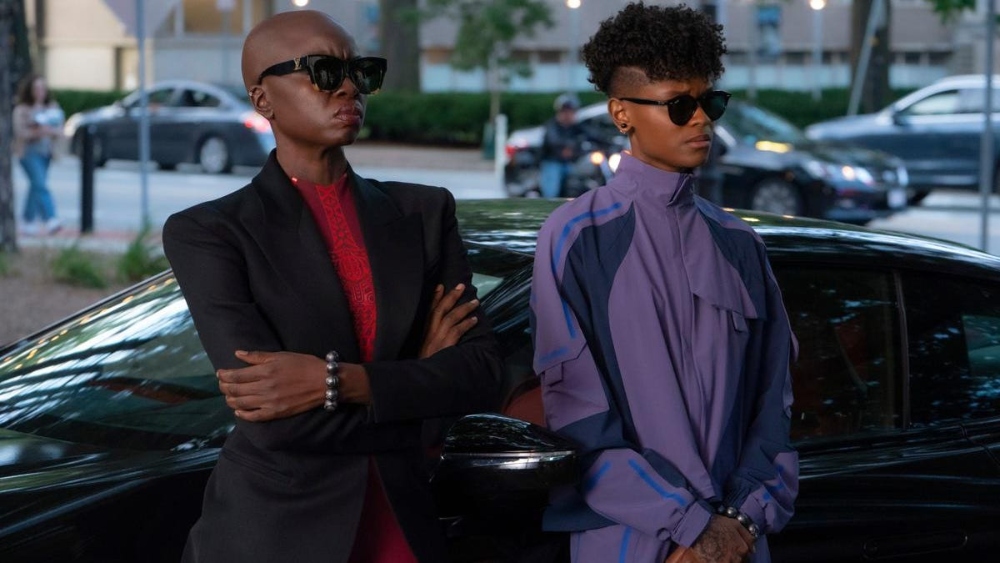
BTL: Just to clarify, what specifically is a VFX Editor doing versus the overall film Editor? How are you going back and forth and putting things together from the different VFX houses and working with Marvel on the studio side of things?
Edwards: For visual effects editorial, I’m responsible for a number of different things. [The] first is maintaining visual continuity through the edit as it changes. We’re responsible for tracking that [and] for helping to composite within that. We also work with picture editorial, keeping up with them, and [making] them aware of the visual effects that can be added in editorial. We’re kind of like that communication. VFX editors, we share two different departments, because we’re visual effects as well, but we’re also the editorial department. We’re operating in the same editing systems as picture editorial. We all use Avid Media Composer, so that way, the edit has a fluid, seamless back and forth between two parties. A lot of times, I’m filling in those gaps for visual effects while the edit is morphing throughout the editing process.
While it goes through its editor assembly, Director’s Cut, etc., we’re helping to fill in those gaps. We’re also communicating with our pre-vis and post-vis companies, who also provide that additional compositing while the edit is forming. We use Digital Domain as our VFX house for that, and it was really awesome to work with them. We’re communicating what the edit looks like to them, so they can send back the appropriate assets that we need. Or if we need them to do X-shot or Y-shot, we’re sending that over to them. We’re physically exporting it [and] getting a QuickTime to them. They’re sending something back, and we’re cutting it into the edit, so that our director, Ryan Coogler, can continue to [maintain] the feel of the film.
Sometimes, I might cut beats to help some of the picture editors, just because I might have some visual effects knowledge of what’s happening later down the pipeline. That happens a lot, too. I might say, “Oh, I added this shot here, I added this shot here, help smooth [out] this point.” We assist picture editorial in doing that; they have us as an asset. That’s just kind of micro-information of what I do. I’m working in a big machine. I have my Visual Effects Supervisors, Geoffrey Baumann [and] Michael Ralla — they were amazing to work with, as well as my Visual Effects Producer, Nicole Rowley. That’s basically what I do.
BTL: How different is working on a big feature like Black Panther versus doing three seasons of Black Lightning? I know that’s a very VFX-heavy show as well…
Edwards: Doing visual effects for episodic does [require] a little bit of a different brain. You’re working in an episodic nature, meaning that I have episodes that might be 30 minutes. For Black Lightning, it’s like an hour. I also worked with WandaVision for Marvel with Tara [DeMarco]. We had some episodes that were shorter than an hour, so your mind works a bit differently. You’re working in acts for a show versus [a] feature film, [where] we work in reels. And so visual effects-wise, my mind has to switch a little bit differently.
My post-production schedules were different for the two types of projects. Wakanda Forever was a really long post-production schedule. I was on it for a year and five months, which included five months of being in Atlanta for the film. I had that perspective of being on-set and also creating and doing the VFX pipeline early in that process. You might operate differently. Episodic, my shot count is per episode, versus in Wakanda Forever or feature films, it’s visual effects shot count for one large thing, so yes, it’s two different brains.
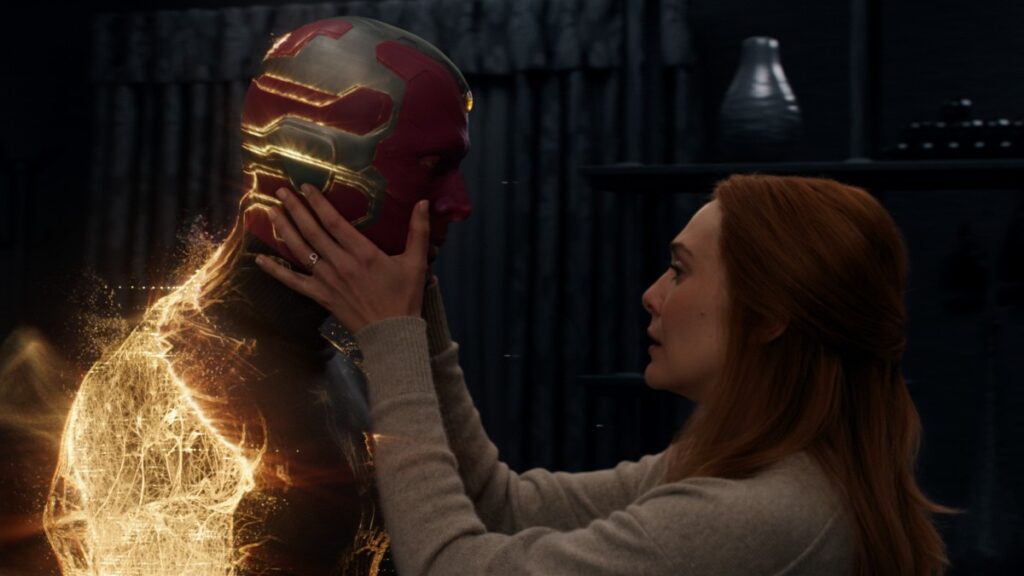
BTL: When I spoke to Tara, I learned Marvel had one VFX house just working on Vision and how he looked over six episodes, and some were just doing his head. It was interesting how the VFX shots were divided up over that show whereas Weta FX did all the underground stuff for Black Panther, specifically. How are you involved in terms of when these different houses are brought on board? Is that from the very beginning?
Edwards: Yeah, coming into the project, from a pre-production standpoint, Weta was already involved, so coming in, for me, especially when I got to Atlanta, Weta was already in the process of working on animation for the film. Coming in as a VFX Editor, I’m receiving the animation that comes from Weta. We’re cutting it into different scenes so that we can build out an editor’s assembly, and then we’re keeping track of what parts of that animation are ones we want to keep. Maybe Ryan wants to change something, or our VFX Producer or our Supervisor wants something different. We’re maintaining that within the edit. Also, as the animation continues to be improved, we’re keeping them updated on what the cut looks like.
Weta was just a great example of them being so involved early on, to make sure that they’re hitting the underwater looks, especially involved with our Production Designer — Hannah Beachler, she’s awesome — in terms of what she created for Talokan as well. She was involved, especially [in] those meetings with Chris White as well, to make sure that we were achieving the [right] look. Once we’ve got original plate photography filmed for that, specifically for me, helping with selects, in terms of some of the actors [who] would fill the environment for the water, and giving that to Weta, making sure that they have what we have in the cut and making sure that they have original photography for that so that they can start building that up and then we can get those shots back as early as possible so that we get those notes and keep the pipeline going. It’s really a lot of communication back and forth.
BTL: I know with Black Panther and other Marvel movies, you have to pre-vis a lot of the shots, and that’s often done in-house at Marvel or Digital Domain. Are you involved with that pre-vis portion even before they get to set?
Edwards: We will receive a lot of the previs from Digital Domain and visual effects editors might cut some of the scenes together if it’s completely pre-vis and pass that on. So Mike Shawer, our picture editor, makes adjustments as well. It will depend on each scene. We kind of play back and forth. Sometimes we’re sending shots to him to cut together in the scene, sometimes we’ll cut something together already because we already have some of the notes from the visual effects vendors. I was involved in that process in Atlanta since we had a lot of pre-vis in pre-production that was done just before we went to shooting. A lot of times, VFX editors [are] kind of responsible for the communication [with] the other departments that will get those edits of the pre-vis as well.
I might be sending QuickTimes to the stunt team. I might be sending QuickTimes onto set. We also have tech-vis that gets sent, as well, so that it can help with construction for the set. An example of that is in our final scene at the Warrior Falls, where you have different tribes. In Wakanda, they’re actually on platforms in terms of filming that scene. We have tech-vis of how much distance should be between each group and whatnot so that we can then come and add VFX later on in the post schedule. Making sure that tech-vis makes it to some of the right parties as well and communicating with Digital Domain, too, when they need that help from VFX editorial.
BTL: Is there a whole team, like five or six or 10 VFX editors working together on the Marvel side of things?
Edwards: We have four on the production side. So myself and also, as the lead, VFX Editor Kevin Jolly, who came over from the first Black Panther as well. He was awesome, and he really brought that knowledge as well, since Wakanda Forever is my first feature film at Marvel Studios. It was really great to have that asset, and, of course, we have a huge VFX team. We have VFX Coordinators, our VFX Assistant Coordinators, etc. So yeah, it’s a really, really big machine.
BTL: Although there was nothing at the very end of Wakanda Forever, I do still like to sit through the end credits to see which VFX houses worked on these movies, even if I don’t know specifically what each one of them did. I know there’s a lot of back and forth going on in post, but from what you’ve told me, you’re the one keeping everything straight and getting everyone what they need either on set or in post.
Edwards: One of the jobs we have definitely is making sure that pipeline continues. A lot of times, visual effects will be the answer for a lot of different parts of the film, in terms of people knowing what’s happening here in the edit, so we get tapped a lot, not just from picture editorial. Picture editorial, they’re with Ryan all the time. They’re going through with this. We’re the department that may feed some more information, edit-wise, to some of the other departments, so we definitely keep that pipeline going.
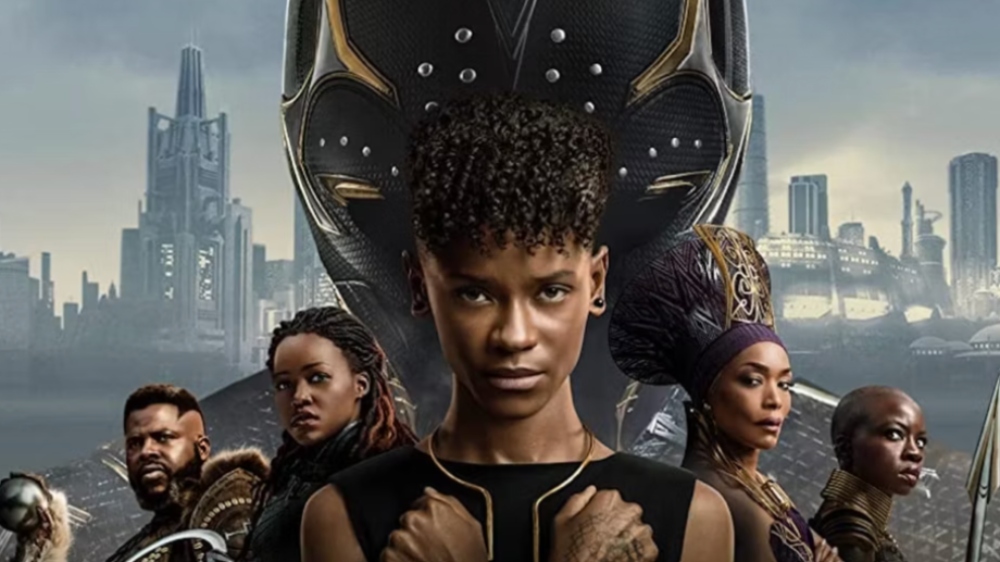
BTL: Did Ryan do all the main editing in L.A.?
Edwards: Primarily for post. We did edit alongside [them] while they were filming, so that’s why we were in Atlanta as well. There are parts of the editors’ assembly that [were] done in Atlanta while we got that out, and then of course, we had additional photography that was also done in Los Angeles. We also filmed in several other locations as well, including Puerto Rico. We also had some of our aerials that are filmed in Haiti as well. We also filmed some of the desert portions in California, just to give an option to our vendors. Definitely, a chunk of the post was all done in Los Angeles, but [there was] a bit in Atlanta, too.
BTL: Since I do speak to a lot of VFX supes, I know there’s this 24-hour cycle when it comes to post, where some might be in L.A. or in Atlanta while dealing with VFX houses in London, New Zealand, or Vancouver. Are there certain hours you’re able to keep so that you’re able to work around that or do you have to be available whenever each of those houses is up and working?
Edwards: We have a great team with our visual effects coordinators, who help to manage the time frames for us. For me, specifically, [and] my position, I’m usually 11 hours, sometimes 12 or 13 [hours a day], once we really [get] into the hefty parts of the schedule. I’m usually between a specific time, and some of those meetings, some of that feedback, the vendors would find ways to coordinate meeting times that were super-early. I think [that] in a remote environment, it made it easier for some of our coordinators, in terms of, they were able to do meetings from home, or even our producer — sometimes she would be from home in those early hours of those meetings.
But for VFX Editors, we’re kind of receiving a lot of the feedback from those meetings, when there are across-the-board timelines. It’s tough for us to be in every meeting with a vendor because we’re still pushing out a lot of work for the edit. A lot of times, it’s us being looped into the emails — what was done from that meeting, what was received, and what they might be requesting, specifically, from VFX editorial? It did often feel that 24 hours [a day], something’s happening, whether it be sending material to them, or they’re sending stuff back to us overnight. There’s always something happening — footage is getting processed, and dailies are being made all the time.
BTL: I started at Below the Line in August 2020, and I remember that everything was shut down, but then production started up again in Atlanta before anywhere else. When did Ryan actually start the shoot for Wakanda Forever in Atlanta?
Edwards: That was [around] June 2021, which is when I actually started. I came about maybe two weeks and some change before we had our first day of shooting, but I was hired in December 2020. Around that time was when I actually knew I was going to be on the project, and then in the summer, I came down to Atlanta.
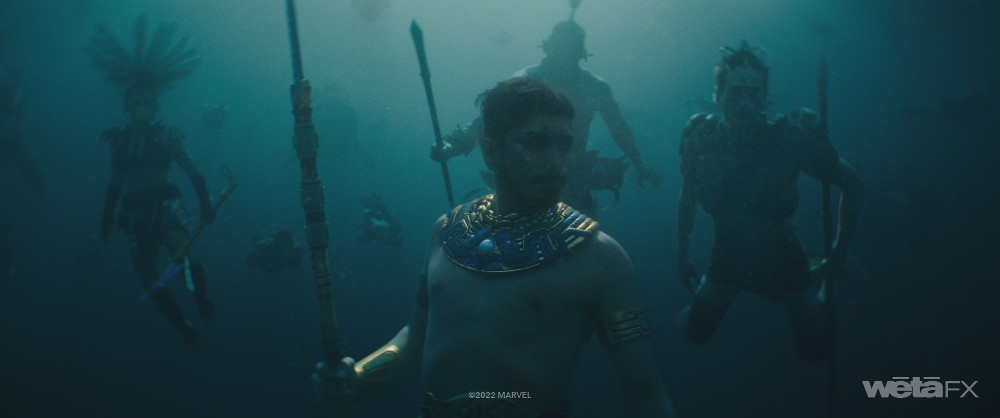
BTL: That’s a pretty quick turnaround for a movie this big that has so much VFX. I guess there was a lot of development and R&D going on in pre-production, and Ryan had directed the first movie, so maybe not so much of a learning curve the second time around.
Edwards: I don’t know, it felt a lot longer, but then again, this is my first feature at Marvel. For me, it was roughly a year and five months, for me on the film, going from being in Atlanta working basically all the way up to the theatrical release. We had a few who stayed on afterward, as well.
BTL: Is there any specific software you use for scheduling or keeping track of QuickTime versions and where the edit is at?
Edwards: For the editing portion, I told you, we all use Avid. We also use Filemaker, which is still an industry, heavily-circulated program. We also use [Autodesk] Shotgrid as well. That’s going to come more from my VFX supervisors and coordinators and producers making notes there, but they had it in a way that translates to our FileMaker as well. So all the same notes made [their] way over. FileMaker is also how I’m communicating [with] my visual effects houses. When we send the information of the shot and what we’re physically sending them, what’s the time code, what’s the in and out points, what needs to happen in it, which is also influenced by our producer, as well as the VFX production managers that insert the table at that point too. But FileMaker, we’re doing a lot of those notes and a lot of that communication in there.
BTL: In my notes, it said that you use Avid Media Composer to “add more movement and life,” so can you clarify what that means? I know that most of the VFX houses have their animation teams, so how are you adding “more movement and life?”
Edwards: [laughs] Definitely, my compositing happens in Avid. I try to keep it in the same software as the picture editor, so it’s kind of seamless [and] I’m not having to transcode things back and forth, which can happen when you go to outside programs. I had a lot of plugins as well. I use a lot of Boris [and] Sapphire, [and] I use Mocca as well, which is where I do a lot of my roto work. [It’s] really helpful, because we had a lot of roto with this in terms of using original plate photography for underwater especially, and then creating environments around it. Those were some of my compositing programs. I also like to dive into Photoshop if I need to. If I need to create a small workaround, I dive into After Effects, but I try to keep most of the compositing in Avid so that it’s just a pretty seamless transition in the edit.
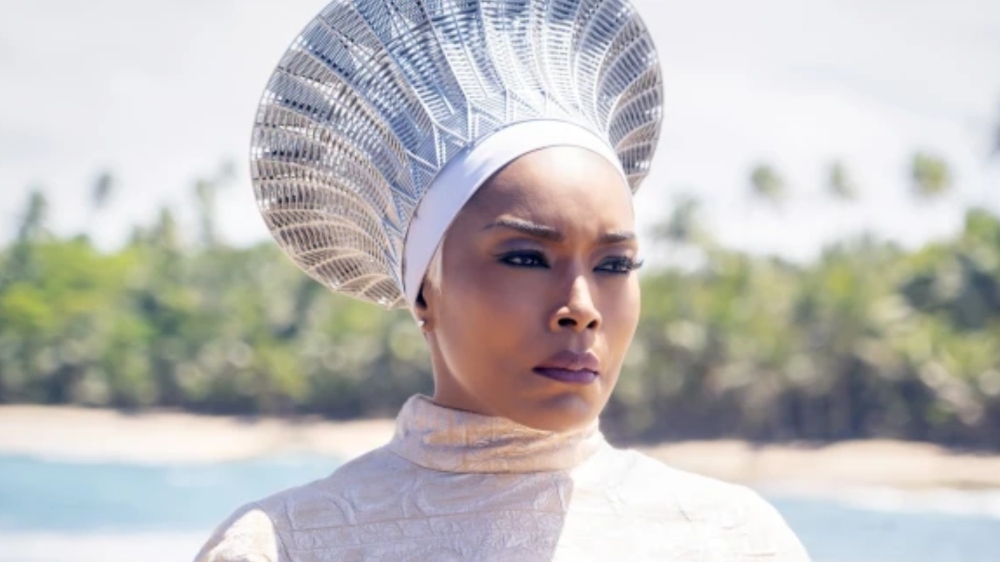
BTL: I read that you also did some work in Boston, too.
Edwards: Yeah, when we introduce Riri Williams. For those [scenes], I did some pre-production as well with that. We also filmed those aerials in Boston. We used an Array camera for that, which gives a 120-degree view and we had six cameras that would then be stitched together and [footage] was passed on. We used a vendor [named] Cinesite to work on those shots, and they could use the stitched Array cameras and either build a 3D environment of the sky of Boston, or they could use our original photography. They had the choice, of course, of how to mix and match and what they were going to do with it, but they had that original photography, which was also led by my Second Unit VFX Supervisor, Michael Ralla — he was really cool for those shoots.
BTL: I’m curious about when one of the VFX houses has an entire scene or section of a movie that may be all CG, or at least VFX-heavy. Are they doing the whole scene, or are they doing bits and pieces for the editorial team to put together? Does that question make sense?
Edwards: There might be a series of shots. I wouldn’t say the whole introduction to Talokan, that’s not all CG. There are definitely elements in there that are original plate photography, and I think Ryan liked it looking real. If you were to actually swim down, really go down into those depths of the ocean, what could it really look like? I think that keeping some of the original plate photography that we had of the waterwork, where we did the tank work, helps achieve that. That’s blended into some of the shots. I wouldn’t say the whole scene is CG. There are chunks or a series of shots that are CG, but in terms of that whole scene, you have parts of it that are the original photography involved in it.
BTL: Are you able to say what you’re working on next, or is it one of those things that you’re sworn to secrecy?
Edwards: I do have some NDAs, but I’m looking forward to continuing in the Marvel Cinematic Universe, so hopefully I can update the world more on that once I’m allowed to talk about things, but I definitely have some fun things [in store] for 2023. [Note: On IMDb, Edwards has a credit on Transformers: Rise of the Beasts.]
Black Panther: Wakanda Forever is now streaming on Disney+.





